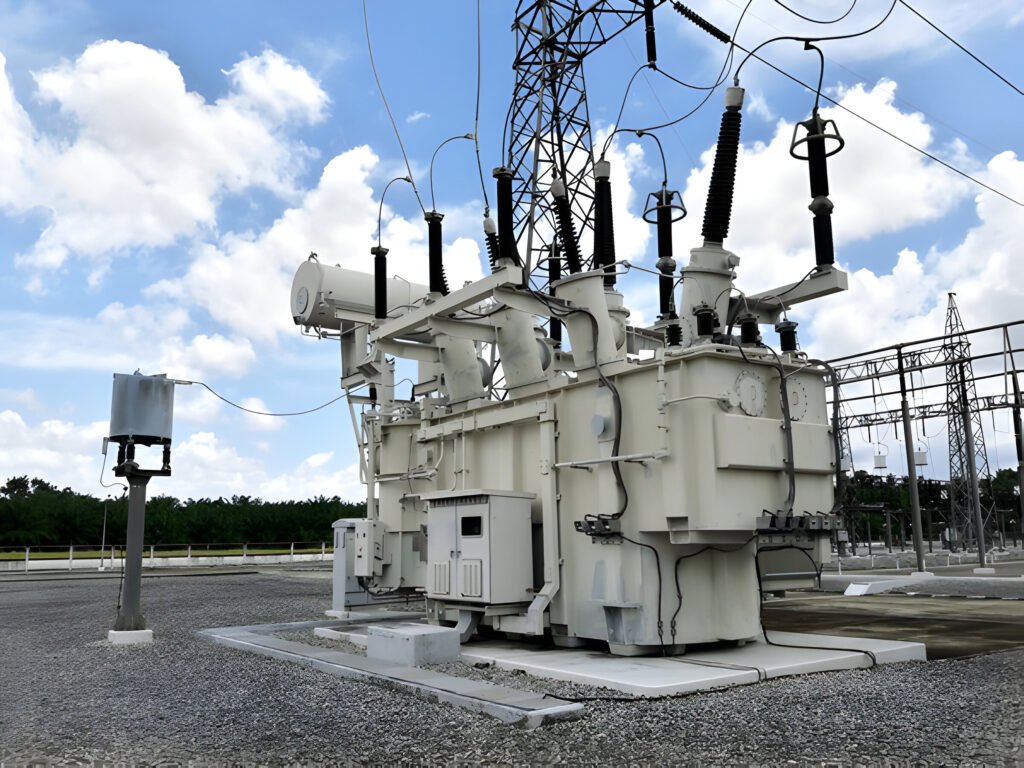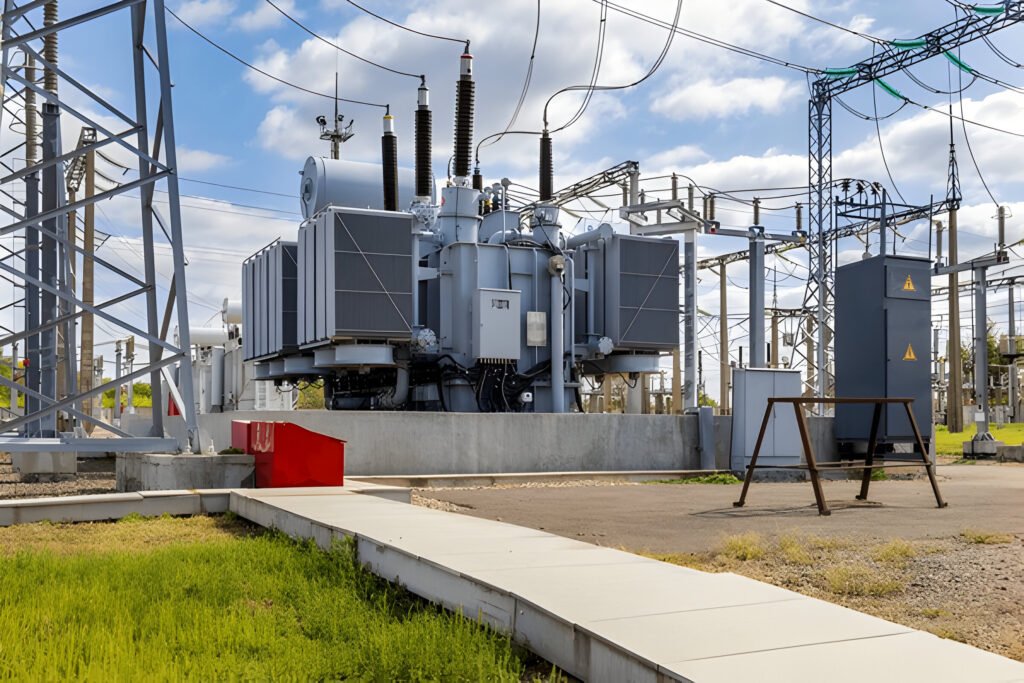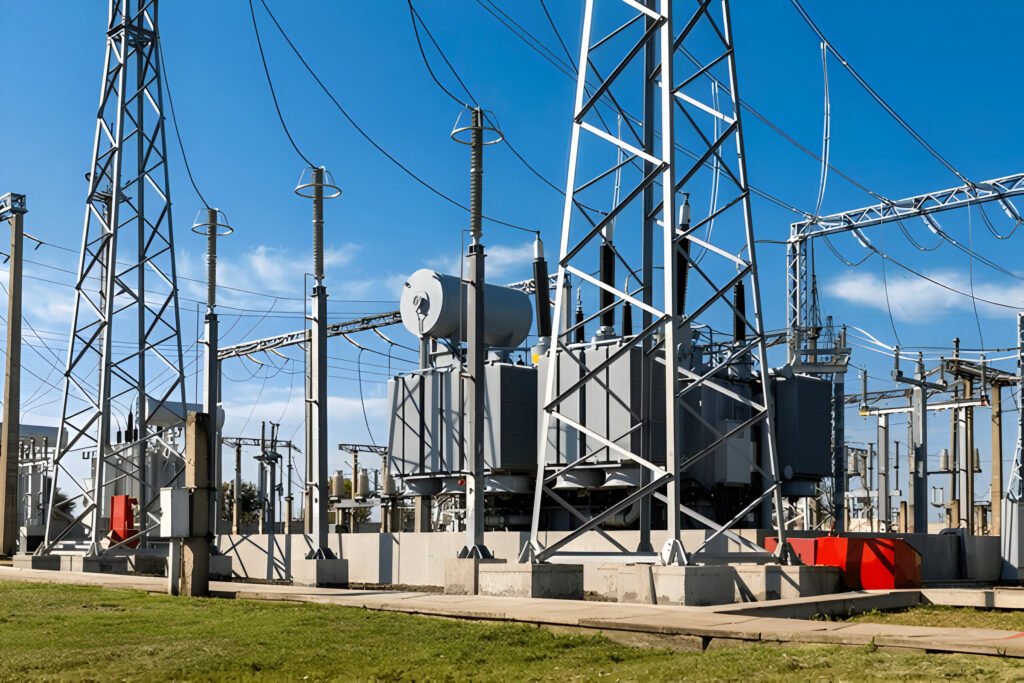What Are Amorphous Cores
Discover the unique properties and applications of amorphous cores in electrical transformers and inductors.
Read More
Transmission transformers handle high voltages for long-distance power transfer, while distribution transformers reduce voltage for local use.

Distribution transformers are critical components in electrical power systems, designed to perform the final voltage transformation in the journey from power generation to consumer. These transformers step down the voltage used in transmission lines to levels suitable for residential, commercial, and industrial use.
Typically installed near end-users, distribution transformers operate at lower voltages, usually ranging from 2.4 kV to 33 kV on the primary side and delivering voltages as low as 120 V to 600 V on the secondary side.
Transmission transformers are key components in the electrical power grid, designed to handle high voltage levels and facilitate the transfer of electricity over long distances. These transformers operate at voltage levels ranging from tens to hundreds of kilovolts, making them essential for reducing electrical losses during transmission across vast expanses.
Transmission transformers are typically located at power generation facilities and substations. Their primary role is to step up the voltage generated by power plants to higher levels, enabling efficient transmission through power lines. This step-up process minimizes energy dissipation in the form of heat.

Distribution transformers typically operate at lower voltage levels, usually below 33 kV. They are designed to step down the voltage from the primary distribution network to a level suitable for use by residential, commercial, or industrial users.
Transmission transformers handle much higher voltage levels, often ranging from 66 kV to 765 kV. Their primary function is to step up or step down voltage to facilitate the efficient long-distance transmission of electrical power across regional or national grids.
Distribution transformers have lower power ratings, often less than 10 MVA. They are optimized for end-user applications where the demand fluctuates but remains within moderate levels.
Transmission transformers deal with significantly higher power ratings, often exceeding 100 MVA. This enables them to manage the vast quantities of electricity required for high-capacity transmission across extensive networks.
Due to their differing functions and power ratings, distribution transformers are generally smaller in size. This compact design allows for installation in urban and rural environments where space might be limited.
Transmission transformers are considerably larger, reflecting their higher capacity and the need to accommodate high-voltage equipment and wiring.
Distribution transformers are engineered for maximum efficiency at low loads, as they often operate at reduced capacities throughout the day. Their design minimizes losses during these periods.
Transmission transformers are optimized for high efficiency across a wide range of loads, given the constant high power flow they must manage. Advanced cooling systems and superior materials are often employed to maintain performance and reduce energy losses.
Distribution transformers are located closer to the end users they serve, such as residential neighborhoods and commercial districts. They are strategically placed to ensure efficient delivery of power to local networks.
Transmission transformers are usually situated at substations, often at the intersections of different transmission lines, to facilitate the transfer of electricity over long distances between generation sites and distribution networks.
Distribution transformers handle load fluctuations that correspond to the varying demand patterns of end-users. They must be capable of adjusting to rapid changes in load caused by daily usage cycles.
Transmission transformers, while also experiencing load changes, deal with more predictable variations driven by broader grid demands. Their design must accommodate both steady-state and dynamic conditions efficiently.
Distribution transformers are exposed to varying environmental conditions, including urban and rural settings. They must be resilient against factors such as weather changes and proximity to populations.
Transmission transformers face more severe operating conditions, often installed in remote or harsh environments. They require robust construction to withstand high electrical stresses and potential exposure to adverse weather.
The winding configuration in transformers affects their efficiency and performance. Distribution transformers often employ delta-star (Δ-Y) configurations, allowing for effective voltage conversion and minimizing losses during load variations.
Transmission transformers might use star-star (Y-Y) or star-delta (Y-Δ) configurations, depending on the specific requirements of the transmission network and the need for phase shifting or neutral grounding.

Distribution transformers are primarily used in scenarios where voltage needs to be stepped down from transmission levels to a lower voltage suitable for residential, commercial, and industrial use.
One major application is in residential areas, where distribution transformers convert high-voltage electricity from the grid to lower voltages that can be safely used in homes. This transformation is essential for powering household appliances and lighting systems.
In commercial settings, distribution transformers are used to supply power to office buildings, retail establishments, and other facilities. These transformers help in delivering electricity at voltages appropriate for heating, ventilation, air conditioning systems, and other electrical equipment used in such environments.
In industrial applications, distribution transformers provide power to machinery and equipment, ensuring smooth and efficient operations. They can handle diverse load requirements, accommodating the varying demands of different industrial processes.
Distribution transformers are also employed in rural electrification projects. By stepping down high transmission voltages to usable levels, they facilitate the extension of electricity to remote areas, promoting economic development and improving quality of life.
One of the primary applications of step-down transformers is in the power distribution system. They decrease high transmission voltages to levels appropriate for residential and commercial consumption. By doing so, they ensure that electricity can be safely and efficiently delivered to homes and businesses without the risk of overloading circuits or causing equipment damage.
Step-down transformers are also essential in industrial settings where machinery and equipment require specific voltage levels. Many industrial machines operate at lower voltages than the standard supply voltage, necessitating the use of step-down transformers to convert the power to the appropriate level.
In addition, electronic devices and appliances often require lower voltages to operate effectively. Step-down transformers are used in power adapters and chargers to convert the higher voltage from wall outlets to the lower voltage needed by devices such as laptops, smartphones, and home appliances.
Step-down transformers are also utilized in renewable energy systems. For instance, in solar power installations, the electricity generated by solar panels is often at a different voltage level than required by the grid or local consumption. Step-down transformers help adjust the voltage to suitable levels for integration into the existing power infrastructure.